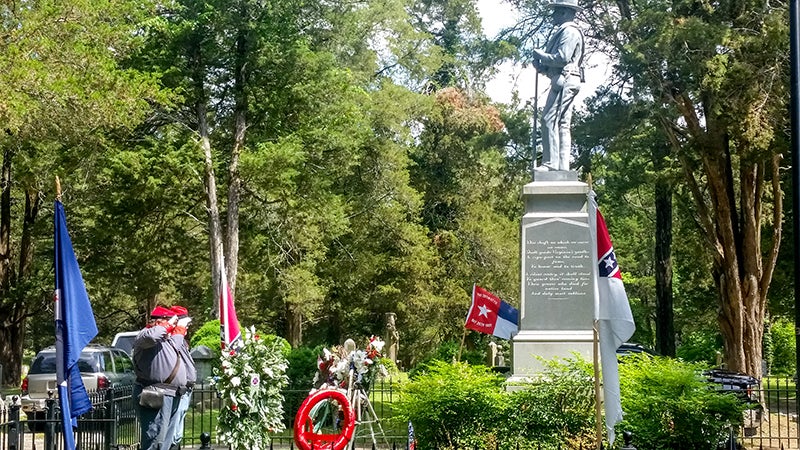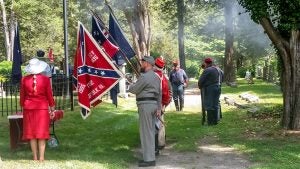Memorial Day ceremony held at Cedar Hill
Published 7:48 pm Saturday, May 26, 2018

- Men salute the Confederate monument in Cedar Hill Cemetery after placing wreaths at its base during Saturday’s ceremony.
More than 60 people gathered in Cedar Hill Cemetery on Saturday to remember the beginnings of Memorial Day.
What has become a solemn annual recognition of those who have died in America’s wars traces its roots at least back to the months and years following the Civil War, when folks would visit and decorate the graves of soldiers from both sides who lost their lives during the conflict.
Hosted by the Suffolk Chapter 173 United Daughters of the Confederacy with participation by the Tom Smith Camp of the Sons of Confederate Veterans, the ceremony is held adjacent to the Confederate memorial in Cedar Hill Cemetery.
During a year that saw Confederate memorials across the South dismantled in the face of protests, the monument in Cedar Hill — located off the beaten path, on a private lot, depicting a generic Confederate soldier — got little attention.

Confederate re-enactors give a gun salute during Saturday’s Memorial Day ceremony in Cedar Hill Cemetery.
Susan Carraway, president of the Suffolk Chapter of the UDC, said Saturday the Confederate dead deserve the recognition — both the monument, erected by Tom Smith himself, and the annual ceremony.
“We owe it to them,” she said. “Most of them were kids. They were fighting to save their land and property.”
The guest speaker was Teresa Roane. Roane, who is black, is a historian, an archivist for the United Daughters of the Confederacy and custodian of the Virginia Division of the UDC.
According to her research, her great-great-grandfather, who was named George Washington, served as a fortification worker for the Confederate Army, she said.
“Everyone was needed for the Confederate effort,” she said. “We are who we are because of our ancestors. They did their duty. It is up to us to make sure they are not forgotten.”
Also Saturday, the gathering rededicated the marker of Robert Elam, a Confederate soldier who served in the 22nd Virginia. The unit played a key role in the capture of Harper’s Ferry and at Gettysburg, according to local historian Fred Taylor.
Elam was struck in the knee by a mini-ball, and his leg was amputated. He became a prisoner of war until the end of the war. Later, he moved to Suffolk, purchased the Washington Hotel and became a restaurateur and innkeeper.
His marker in Cedar Hill Cemetery was repaired and restored by Lee Hart.






